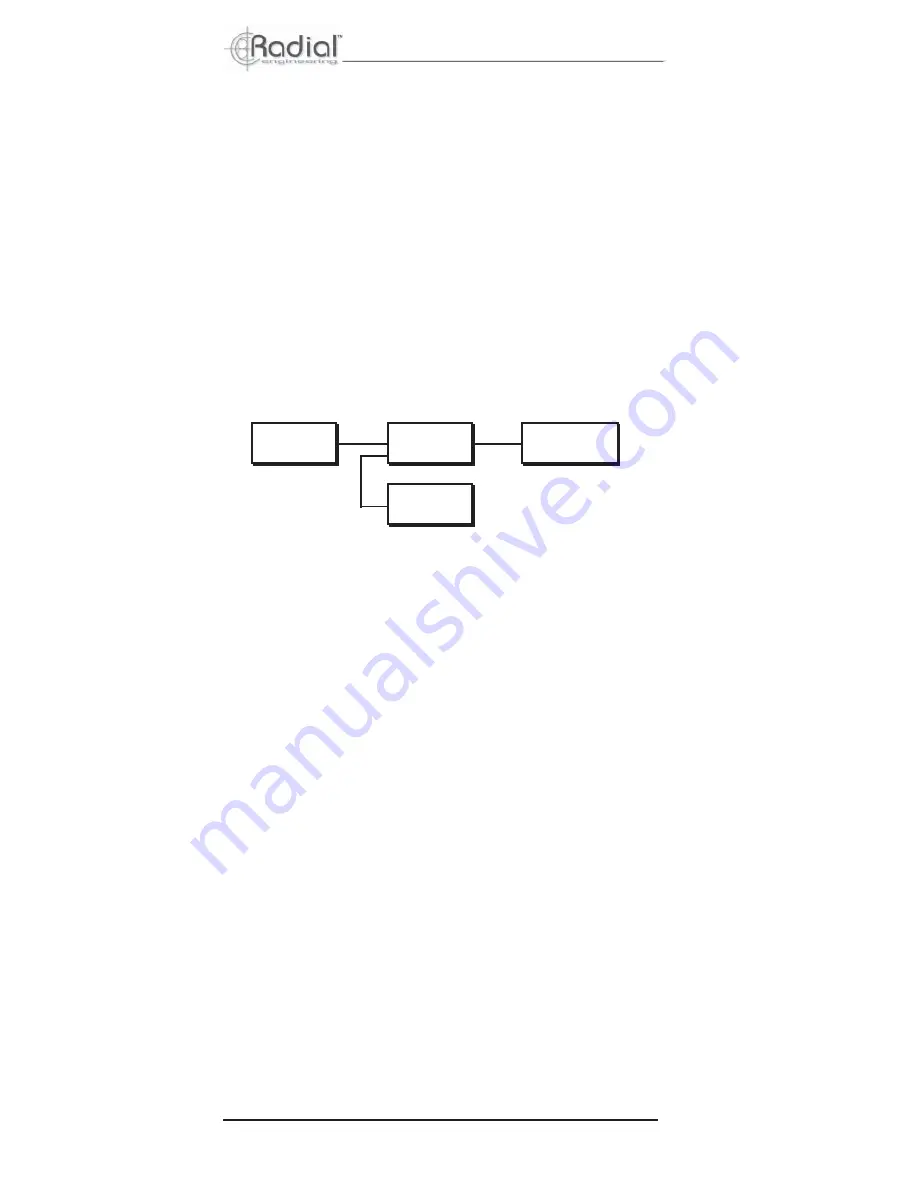
GUITAR
DIRECT
BOX
GUITAR
AMP
RECODER
TRACK -1
7
USING THE X-AMP
Step 1 – Record a dry track
As most re-amping is performed with an electric guitar, we
have chosen to discuss the process using this as an
example. The same process applies with voice, keyboard,
violin and any other instrument.
Start by recording a dry track using a high quality direct box
(DI) such as the Radial JDI, Radial J48 or Radial JDV. Keep in
mind that cheap DI boxes sound less realistic, have limited
dynamic range and tend to have less warmth. When re-
amplifying a track, it is important that the source track be as
clean and natural sounding as possible. The JDV is
particularly adept as it features Drag Control™, an impedance
correction circuit that achieves the most realistic tone.
The usual connection when recording for re-amping would be
to connect the guitar to the DI box and have the thru
connection go to your effects pedals and guitar amplifier. The
DI’s balanced output would be connected to the mixer and
recording device.
By recording this way, you will be able to listen to your guitar
amplifier sound while recording a “clean” signal. The clean
guitar track will retain all of the inflections and sustaining
effects that you would normally hear and ‘feel’ when you
perform. Note that when playing with a loud, heavily distorted
sound, the guitar interacts with the amplifier. The amplifiers
sonic vibrations excites the guitar strings and can produce
constant sustain and harmonic complexities.
The recording of the “clean” guitar tone will contain all the
sustain and inflections of the original performance. When Re-
amping, the clean guitar track will drive the guitar amp in the
same way as when the player was standing next to it. Re-
amping recreates the same complex tones between guitar,
amp, and loudspeaker as when it was recorded. This will
allow you to replay the performance back through various
amplifiers and effects devices to create alternative
resonance peaks and harmonics.
It is also important to note that you will generally want to
record the wet track (effects pedals and amplifier) at the
same time with a traditional microphone set-up. This way, you
can mix the original track with re-amplified tracks to create
new textures.
True to the Music
X•AMP User Guide
Radial Engineering


































